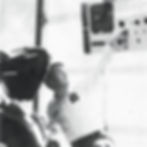The O.B.D. was already found on the 1971 VW Beetle
- COCKPIT
- Jul 22
- 3 min read

One of the modern car diagnostic accessories is the OBD (On-Board Diagnostics) port, which allows you to connect your car to a program that detects faults. This invention was made official in 1985, before the appearance of OBDII became mandatory in 1996. Then we saw the arrival of E-OBD, which is the European version of this system for gasoline cars in 2002 and for diesel cars in 2005. We will come back soon in an article on how this system works. But did you know that before all this fuss, the little VW Beetle already had its own diagnostic port? Here is its story:

The VW diagnostic socket was introduced in mid-1971 on Type 1, 2, 3, and 4 cars. It connected to various electrical points on the car, allowing a computer at the VW dealership to diagnose the performance or malfunction of certain engine/electrical features.
Many changes were made over the few years the socket existed.
Here are the first items monitored:
Taillights: (rear, brake, cornering). The taillight connection was later removed.
Rear window defogger.
Battery condition and charging circuit.
Engine compression.
Ignition timing.

The diagnostic socket had 24 wiring pins, arranged in four horizontal rows of six pins each.

For those who want to read the details of the diagnostic connector, here they are:
There were numbers 1-6 in the bottom row, from left to right, then 7-12, then 13-18, then 19-24 in the top row (from left to right). In addition, there were four additional connections in the center, with the standard VW terminal numbering conventions of 15, 50, +, and 31.
Pins 9, 10, 11, and 12 are connected to the tail, turn signal, and brake light wiring. The computer could only tell if voltage was reaching these lights, not whether the bulb was burned out.
Similarly, the connection to the rear window defroster relay (pin 5) only indicated whether the relay was supplying power to the heater element.
Various checks could be performed on the battery circuit. The open-circuit voltage was measured from pin 31 to pin +. With the engine running, the charging voltage could be measured. It was also possible to apply external charging currents while observing the battery voltage.

In early 1972, a small pulse transformer was added to the spark plug wire. It generated a signal when the first spark plug fired. This signal was sent to pins 19 and 20. The transformer was essentially a ring that fitted around the outside of the spark plug wire. There was no physical connection to the actual plug wire; the current flowing through the plug wire simply induced a voltage pulse in the transformer winding.
Beginning in 1974, a sensor was added behind the steering wheel to detect TDC.

The diagnostic program was quietly abandoned in the late 1970s with the arrival of the new water-cooled VWs, which began using fuel injection computers and other more sophisticated management systems that didn't require a separate diagnostic system and plug.
Financially, there was a considerable production cost involved in all the special wiring and sensor devices, not to mention the cost to VW dealers for the special equipment to read them. This probably made the dealership's work easier, but it's possible the program never had a significant impact on sales.

American astronaut Buzz Aldrin, one of the 12 men to have walked on the Moon, even promoted this system, which shows its importance. Buzz Aldrin is even said to have worked on evaluating this system, given his expertise in the field.